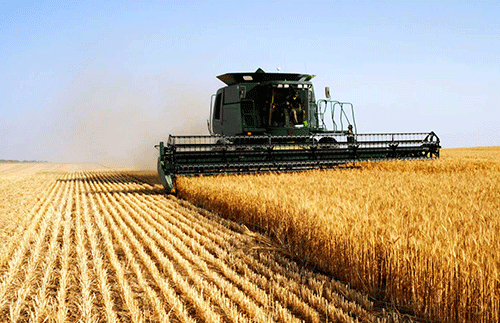High input costs and unfavourable climate conditions are some of the key factors that continue to threaten the livelihood of wheat-producing farmers and the country’s agronomic sector, which has posted a 50% decline in production output.
The worrying trend was shared by the Namibia Agronomic Board (NAB), which said a large number of wheat-producing farmers across the country were either forced to downsize or completely halt operations due to the rising input costs.
The biggest challenge to the country’s wheat farmers is the high costs of electricity at the various irrigation schemes and deteriorating weather conditions, which are a result of climate change.
“We are not witnessing a declined per say, but rather a fluctuating trend in terms of wheat production. The NAB has embarked on research and also doing a trail-runs on a variety of wheat crops at various production areas, with the aim to see which wheat varieties will adapt well to our climate conditions. We have partnered with Unam to carry out the research process, and have also been engaging other key stakeholders to try and see how we can jointly tackle the high cost of electricity and related issues,” shared Gilbert Mulonda, NAB’s agronomy and horticulture market development general manager.
He added: “Another challenge for our farmers is lack of proper storage facilities countrywide and them being under pressure in terms of storage costs. So, with this research, we will be able to see where the actual challenges are and how can we help our farmers overcome them.”
Wheat is a winter crop and can only be planted in Namibia under irrigation systems. The main wheat production areas are the Hardap Irrigation scheme at Mariental in the south of the country and the government-run irrigation projects along the Okavango River.
Small portions of wheat are also produced at irrigation farms in the Maize Triangle area. Wheat is normally planted during June/July and harvested between November and December every year.
In Namibia, wheat is the second highest consumed staple food crop after maize, yet accounts for the lowest in terms of production. Namibia is a net importer of wheat, and imports about 90% of its wheat requirement annually.
Therefore, this presents an opportunity for increased local production of wheat in Namibia. The NAB has implemented a grain marketing scheme to ensure that local producers have got a secured market in Namibia, as local processors have committed through a mutual agreement to buy locally produced wheat, and at a price not less than the set minimum.
Additionally, to promote value addition in the country, the Namibian government through the NAB is implementing import restrictions on wheat flour, and thus only the raw materials can be imported and, in most cases, only specialised wheat flour can be imported.
However, climate variability is one of the most common factors that affect wheat production globally, and Namibia is not an exception. Therefore, there is a need for Namibia to continuously conduct research trials on different varieties of wheat, in order to find varieties that can perform better in the Namibian climatic conditions.
The other important aspect to unlock Namibia’s potential to increase wheat production is to find ways to reduce the input production cost for wheat.
There is also a need for the crop industry to collectively lobby commercial or development banks to offer reliable and affordable financing for crop production, in order for our farmers to be more competitive from a production cost viewpoint.
ohembapu@nepc.com.na
–


